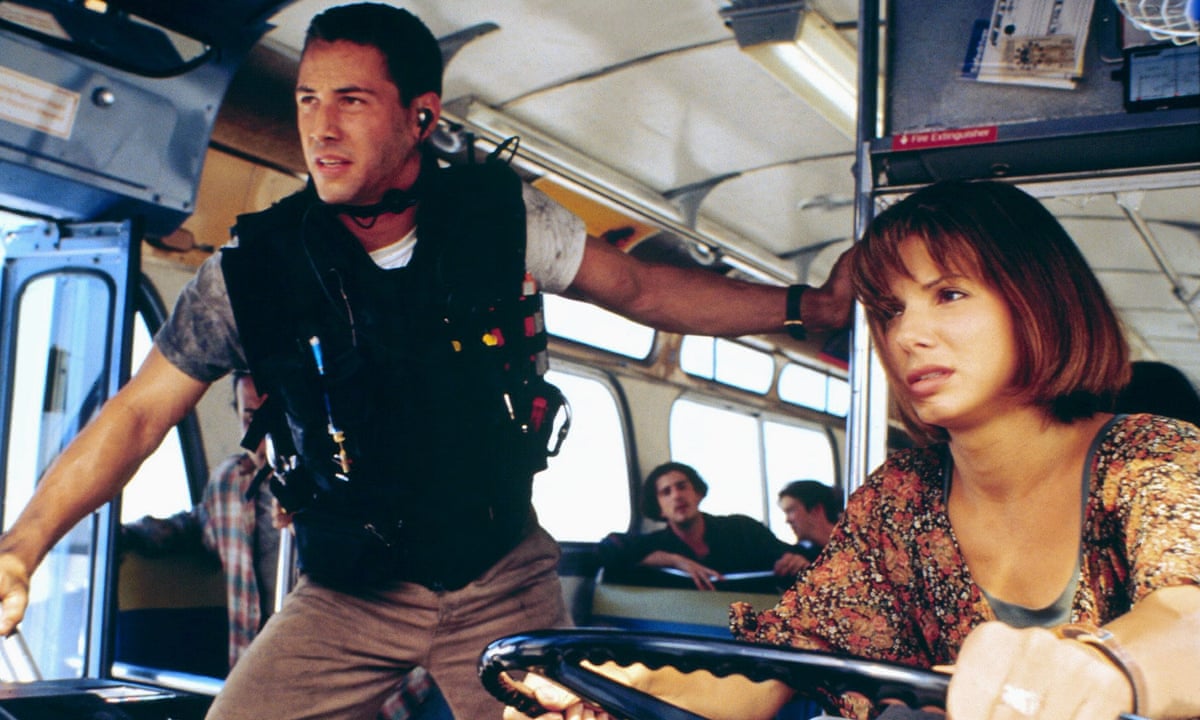Speed is a 1994 American action thriller film directed by Jan de Bont, in his directorial debut, and written by Graham Yost. The movie stars Keanu Reeves, Sandra Bullock, and Dennis Hopper in a high-octane tale that keeps audiences on the edge of their seats. Known for its relentless pacing and pulse-pounding suspense, Speed has become a defining entry in the 1990s action genre, earning critical and commercial success while cementing itself as a pop culture touchstone.
The story revolves around Jack Traven (Keanu Reeves), a skilled Los Angeles SWAT officer who faces off against a cunning and dangerous terrorist named Howard Payne (Dennis Hopper). After a tense opening sequence in which Jack and his partner Harry (Jeff Daniels) thwart Payne’s elevator-bomb plot, the villain escapes and vows revenge. Payne’s next move is far more sinister: he rigs a city bus with explosives that will detonate if the bus slows below 50 miles per hour. Once the bus is in motion, the countdown begins—literally and figuratively—and Jack must find a way to keep the passengers alive while outsmarting Payne.
Sandra Bullock stars as Annie Porter, a passenger forced to take the wheel after the bus driver is injured. Her chemistry with Reeves, coupled with her character’s mix of courage and vulnerability, helped launch Bullock into stardom. Annie’s dynamic with Jack adds a human element to the film’s otherwise tense and mechanical premise, giving audiences someone to root for beyond just the survival stakes.

One of the film’s most notable achievements lies in its pacing and practical stunt work. The majority of the bus sequences were filmed on location in Los Angeles, with minimal reliance on computer-generated effects. Director Jan de Bont, formerly a cinematographer on action-heavy projects like Die Hard, brought a gritty, visceral style to the production. The high-speed chases, tight camera work, and creative set pieces—such as the bus leaping over a gap in the freeway—remain iconic in action cinema.
Mark Mancina’s driving score amplifies the tension, while Yost’s screenplay ensures the audience has little time to catch their breath. The combination of a simple but ingenious premise, likable leads, and clever twists keeps the suspense fresh from start to finish. The climax, shifting from the bus to a runaway subway train, maintains the same intensity, proving that the film’s adrenaline never truly slows down.

Upon its release, Speed became a box office hit, grossing over $350 million worldwide against a modest budget. Critics praised its tight direction, thrilling action sequences, and standout performances, particularly noting how the film avoided unnecessary subplots in favor of sustained momentum. It went on to win two Academy Awards for Best Sound Editing and Best Sound Mixing, further solidifying its place as a technical achievement in action filmmaking.
Over the years, Speed has retained its reputation as one of the best action films of its era. Its “high concept” premise, memorable one-liners, and breathless execution have influenced countless thrillers that followed. Even decades later, the simple directive—“Keep it above 50”—remains one of the most instantly recognizable stakes in movie history.
-1752639756-q80.webp)
-1751862610-q80.webp)

